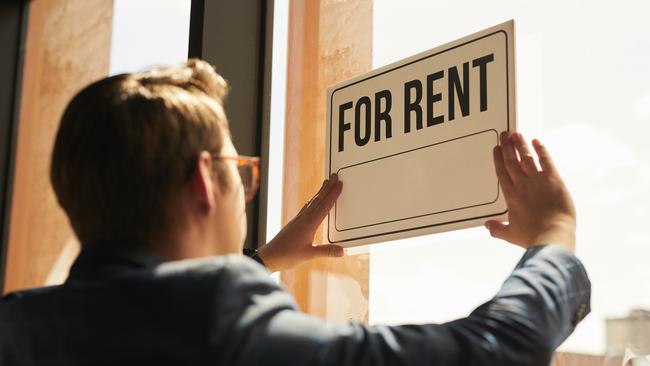A modest proposal to break the rental market gridlock

Rents have been skyrocketing. Median rents have risen by more than 10 per cent in many capital cities over the past year.
This crisis has been predominantly caused by two supply and demand factors.
First, a rapid population increase, largely due to record immigration, has strained housing availability.
Second, a marked decrease in the number of landlords over the past five years, partly due to tighter credit regulations (interest-only mortgage crackdown) and many investors opting to sell property during the Covid-19 boom.
The extent of investment property selling is reflected in the significant surge in capital gains tax (CGT) revenue, reaching almost $12bn in the 2021 financial year, up from $6.7bn in the previous year.
Consequently, the supply of existing rental properties has been diminishing while demand from renters has been rising.
Most property experts agree the solution to the rental crisis requires a two-pronged approach.
Increasing the construction of new dwellings is essential.
The federal government has set a target of building 1.2 million homes over the next five years. This is a very challenging goal given labour shortages, cost challenges, and record construction business insolvencies.
However, it is crucial to recognise that new homes can only be constructed in areas with available land.

The second prong is attracting more landlords into established locations to replace those who exited the market, converting existing homes into rental properties.
To attract more landlords, the initial step must be to help individuals willing and able to invest in property but are locked out of the market due to borrowing capacity.
Banks impose a 3 per cent buffer on top of prevailing interest rates to assess a borrower’s serviceability. In other words whatever interest rate you think you will be paying to the bank, the bank itself must add 3 per cent to the rate agreed and then test your ability to repay at that level.
This means prospective loan commitments are calculated at around 9.5 per cent on a principal and interest repayment basis.
Put simply, looking at average figures, an investor must demonstrate they have an annual surplus cashflow of more than $67,000 after tax to borrow $1m.
The RBA cash rate would have to rise above 10 per cent for this to be a reality on an interest-only basis. To make the assessment of borrowing capacity more logical, the benchmark interest rate could be capped, possibly at 9 per cent on an interest-only repayment basis.
If capping the benchmark interest rate is not successful in attracting additional landlords, then the government must consider alternative initiatives. This rests on the federal
government’s shoulders because the states rely heavily on property market tax revenue in the form of stamp duty and land tax. They cannot afford to cut taxes given their debt levels.
Cut to the chase: We have a gridlock in housing.
So what can the federal government do? They could offer CGT incentives to long-term landlords.
Here are a few proposed ideas.
If you own an investment for more than 12 months and make a capital gain when you sell the investment, you are entitled to discount that gross gain by 50 per cent.
The government could provide a bonus CGT discount of 10 to 15 per cent for landlords who make a property available for rent continuously for at least 10 years.
It could offer a concession to individuals who sell their investment properties and roll the capital gain into their superannuation. Australians invest in property to build retirement savings and more self-funded retirees reduces the burden on the welfare system.
There is already a tax precedent here: Similar CGT incentives are already offered under “small business CGT concessions”, allowing business owners to roll the capital gain from a sale of a business into super to avoid paying CGT.
The government could reinstate the general 50 per cent CGT discount for Australian citizens who are non-tax residents working overseas. Presently, Australians working abroad are taxed on the full 100 per cent of property capital gains for the duration they are overseas. Consequently, expatriates are hesitant to invest in Australian property.
These suggestions should only be considered as a last resort. Generally, governments should resist intervening in a free market. It is also preferable that property does not receive any
preferential tax treatment. However, the rental crisis must be solved, and if all other interventions have failed then increasing tax incentives could be the lesser of two evils.
Separately, it is important to acknowledge that any potential solution to the rental crisis will take several years to yield results. There are no overnight fixes, and unfortunately renters may experience worsening conditions in the coming months and years before improvement is
noticeable.
Stuart Wemyss is a financial adviser and host of weekly podcast, Investopoly.
swemyss@prosolution.com.au



It’s been widely acknowledged that we have a rental crisis on our hands. National vacancy rates have fallen to historic lows – around 1 per cent – and even lower in some capital cities.